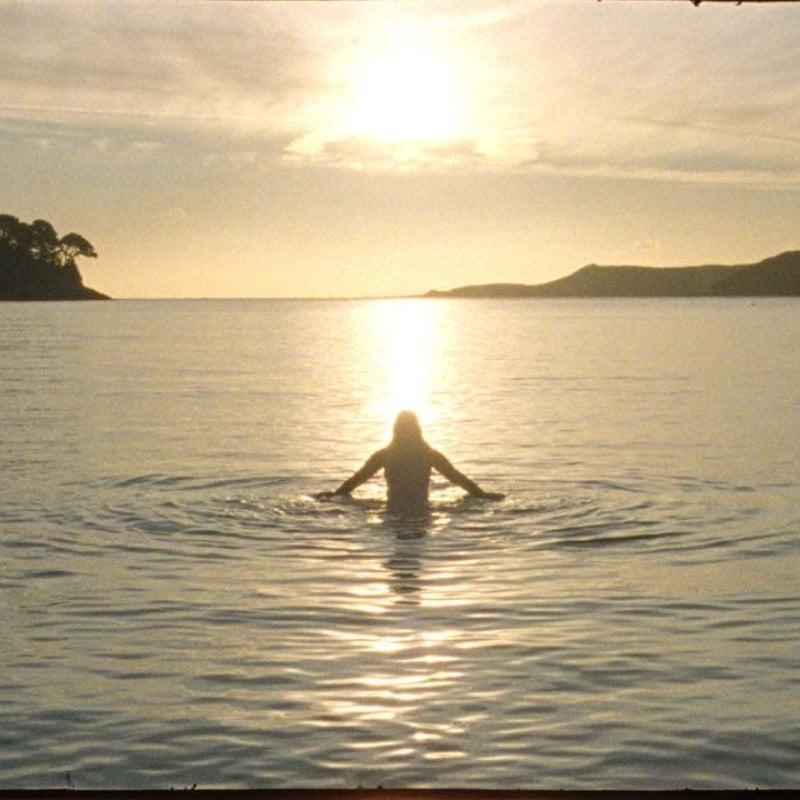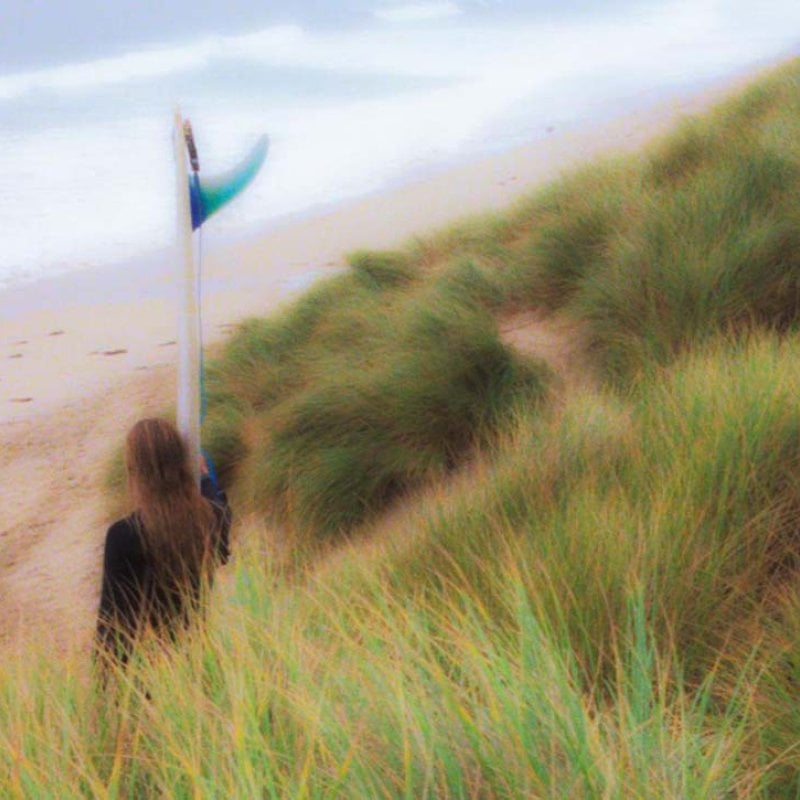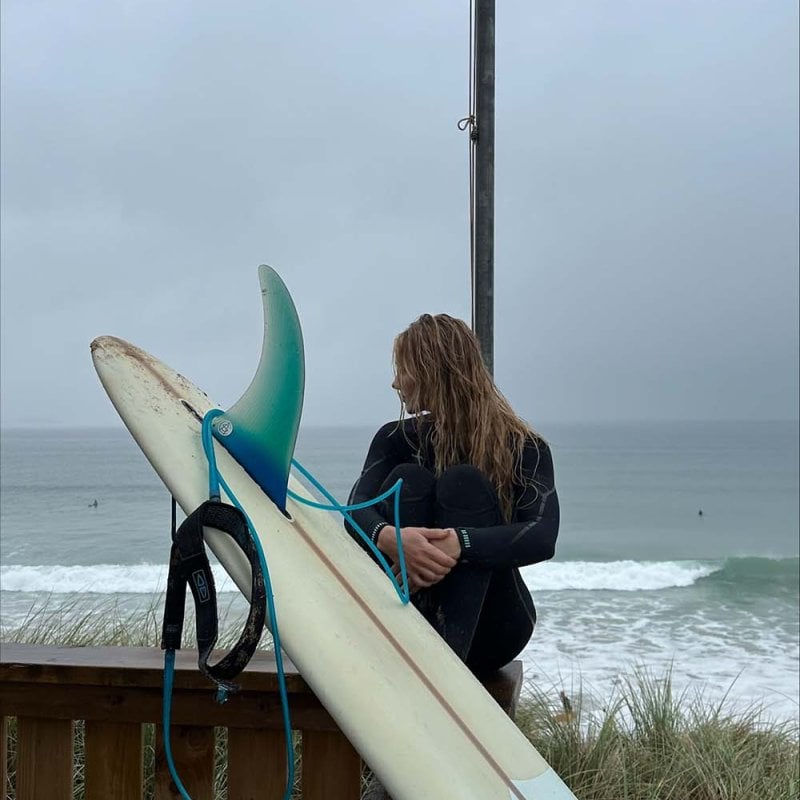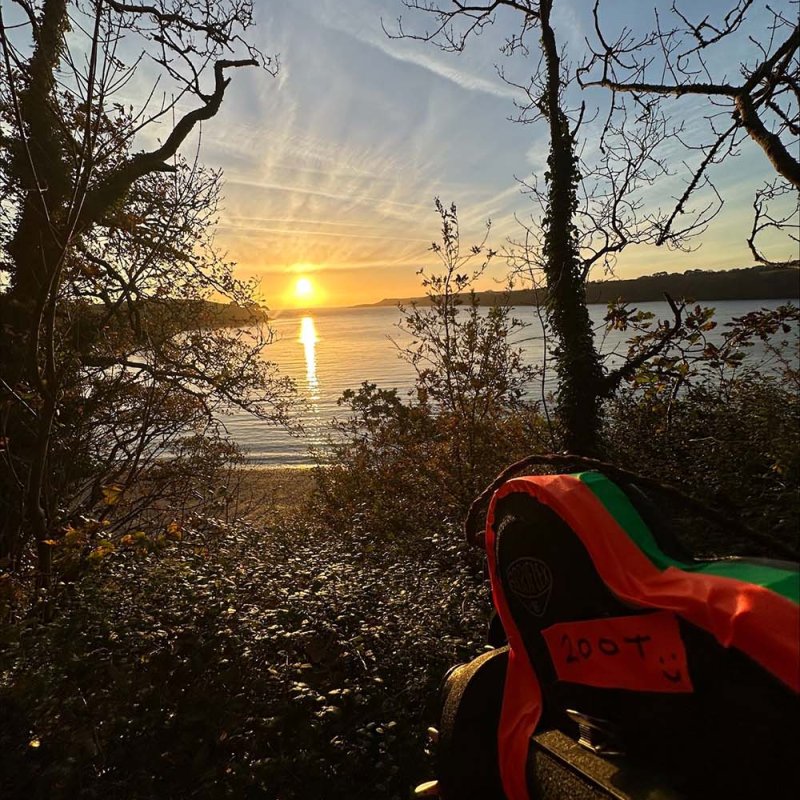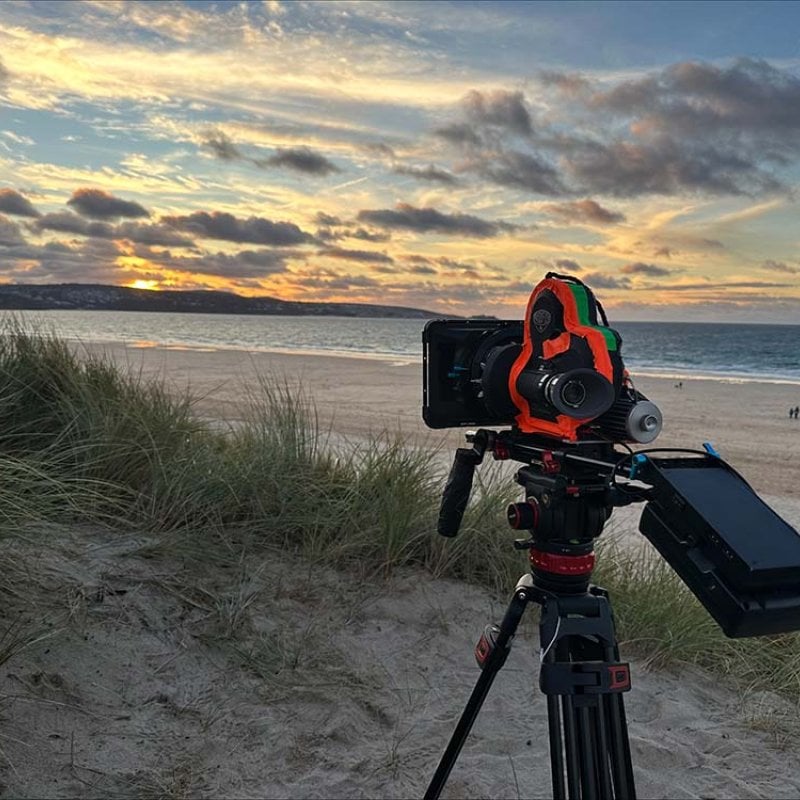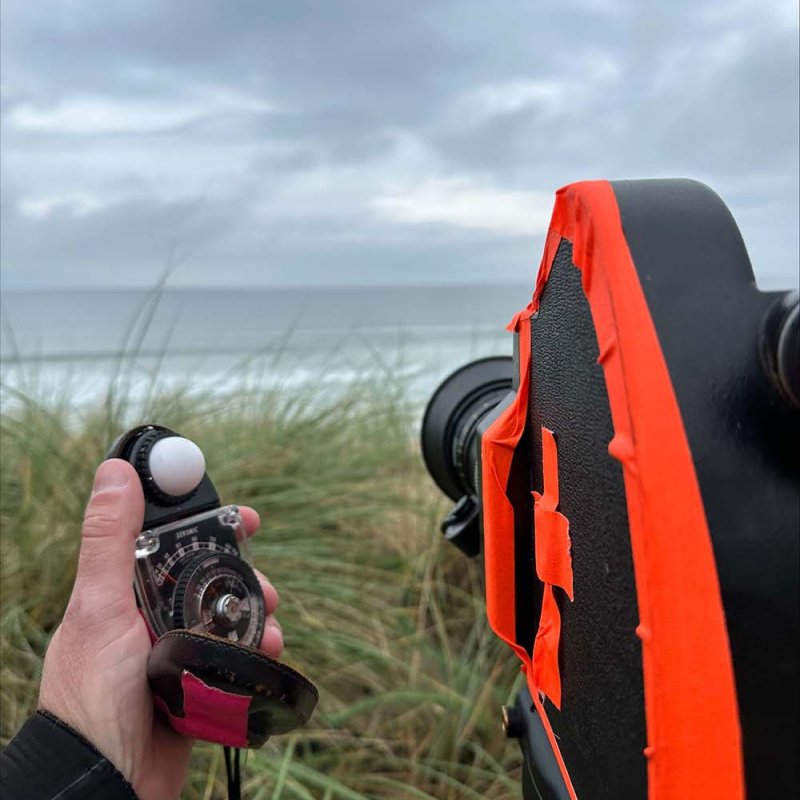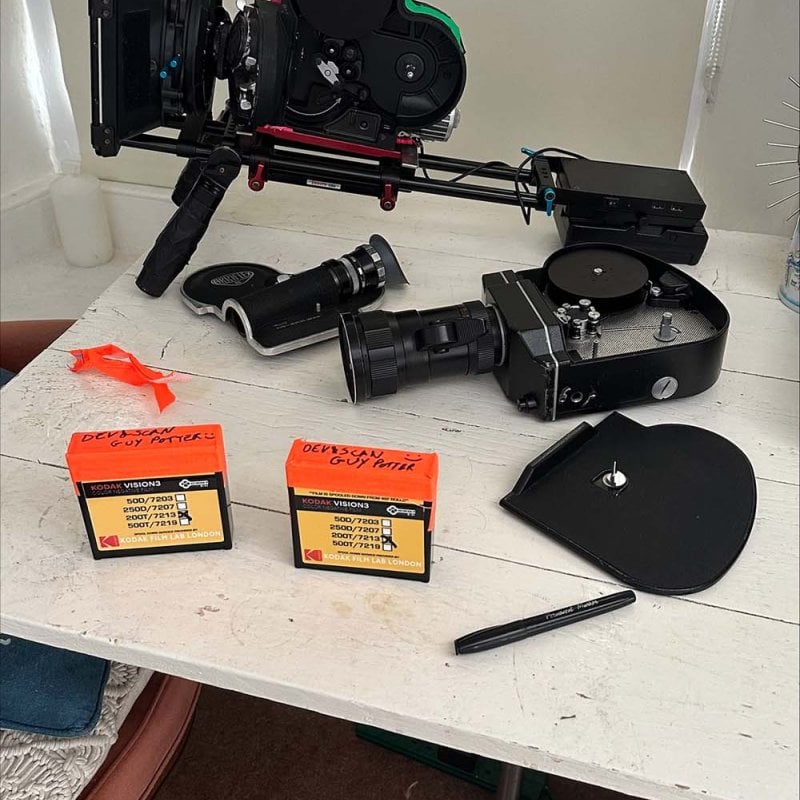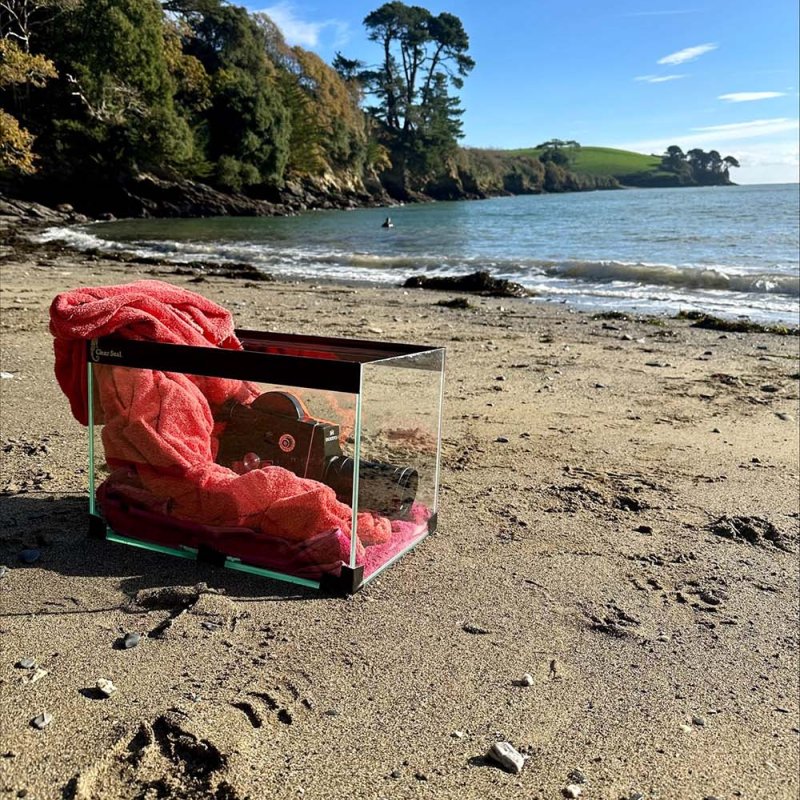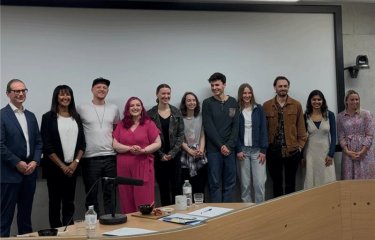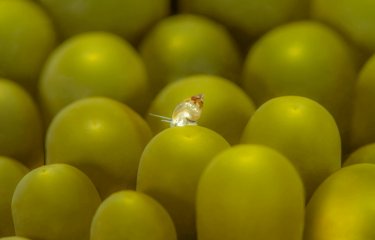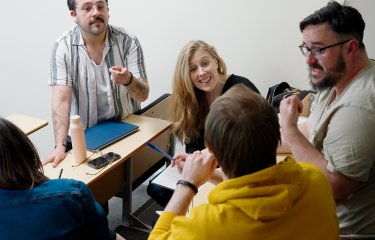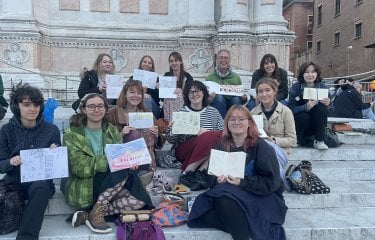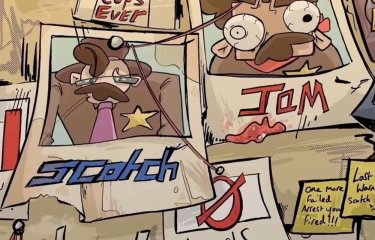Nahlia Loren Couto on crafting a surf film across time zones
17 April 2025
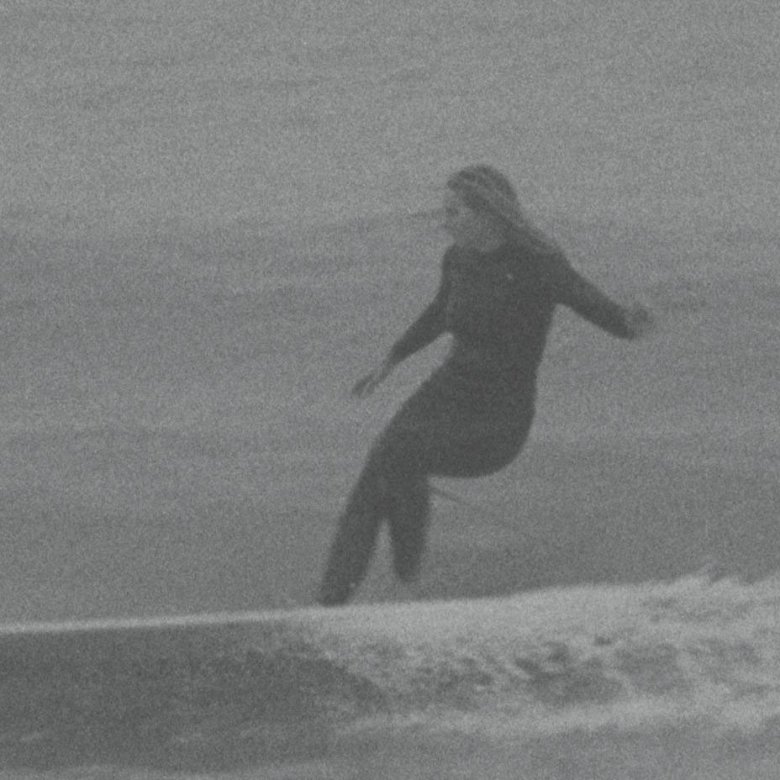
Cornish folklore and green storytelling unite in An Mór: Where the Tides Speak, a poetic eco-adventure from Film & TV MA (Online) students Nahlia Loren Couto, Guy Potter and Tristain Meredith. The project came to life across three continents and multiple time zones – yet remains grounded in Cornwall’s coastal spirit.
Set along the wild Cornish coastline and rooted in the myth of Mermaid of Zennor, the 16mm-shot short film follows a young woman at a personal crossroads, who turns to the land and sea for guidance. Blending lyrical visuals with sustainable production practices, An Mór explores identity, belonging and environmental stewardship, while celebrating the emotional power of place. Shot with an intentionally low-impact footprint, the film reflects a mindful approach to both storytelling and sustainability.
We caught up with co-director Nahlia to find out more about the film’s green credentials, the challenges of producing a film across time zones, and her experience on the course.
How important was producing the film sustainably?
Sustainability was foundational to our approach – both creatively and logistically. Every decision was filtered through an eco-conscious lens. We kept the entire shoot hyper-local: the locations were chosen for their proximity to our DOP’s home, which reduced travel emissions significantly. We also worked with local talent and collaborators, keeping our footprint small and our community engagement strong.
There were no constructed sets – nature itself was our stage. We worked with what the landscape gave us, honouring and respecting the environment. Props were thrifted or innovatively repurposed (including rigging a fish tank to achieve one of our water effects!), and the wardrobe was made up entirely of the actor’s own clothing, adding both authenticity and sustainability.
We also ran a completely paperless production – using digital platforms for everything from call sheets to feedback cycles. We embraced tools like WhatsApp, Zoom, Frame.io and Yamdu to communicate across time zones, creating an international workflow that was efficient, collaborative and low-impact.
Why did you choose to shoot in 16mm film?
Our choice to work with 16mm film was both an artistic and an environmental one. Partnering with Kodak, we explored how analogue could actually support our sustainability goals. Because 16mm requires so much care and planning – every shot is precious – we were incredibly mindful of our usage. That intentionality helped reduce waste and encouraged a minimalist, focused approach on set.
The partnership with Kodak Lab London Pinewood stems from an earlier project Guy made called Trengellick Rising – a Cornish-language short shot on black-and-white Kodak film, hand-processed at home. He worked with Digital Orchard for scanning, and that relationship has continued to grow. Since moving into the Kodak Lab at Pinewood Studios, Digital Orchard have remained an incredible source of guidance and generosity – giving us a tour of the lab, offering technical support, and even sharing our project on their socials. We’re especially grateful to Dan Redrup, Head of Scanning, and Andrew Hill, a technician in the lab, whose help and kindness made all the difference.
Relationships like these have been formative. In an industry moving quickly towards AI and digital homogeneity, we feel more committed than ever to the authenticity and tactile quality of working with film. For An Mór, shooting on 16mm enhanced our connection to the landscape – the grain, the salt spray, the granite textures – and grounded the work in something physical and enduring. Ironically, a 2TB hard drive failure halfway through the process made this even more clear: the only reason we still had everything was because it physically existed in film cans at home.
What was the process of integrating Cornish language into the film?
Integrating Cornish was a deeply respectful and collaborative process. We worked with a local language translator to ensure accuracy, but more than that, we wanted to honour the emotional and cultural resonance of the language. It brought an added depth and sense of place to the story – rooting the narrative in the history and identity of Cornwall.
Why did you choose the locations, and how did you find the protagonist, Zennor Rose?
Our locations were chosen both for their breathtaking beauty and their practicality – they were all within a close radius of our crew base, which made it easier to keep our shoot low-impact. These natural settings weren’t just a backdrop – they were an active part of the story’s emotional and visual arc.
Zennor Rose is a close personal and professional friend of Guy Potter’s, having collaborated with him on a previous project. She brought such grace, depth and connection to the land – it was clear from the beginning that she was the heart of the film. Her own lifestyle and values mirrored the themes we were exploring, and that authenticity really shines through.
What were the challenges of creating a film from Canada, Australia and Cornwall, and how did you overcome them?
Creating a film across three continents was definitely a dance of logistics and communication, but our team embraced it with openness and creativity. We used a variety of digital tools – WhatsApp, Zoom, Frame.io and Yamdu – to stay connected and share everything from storyboards to rough cuts. It was a beautiful example of how digital collaboration can still feel deeply human and grounded, even from afar.
Using 16mm film did add complexity – there’s no instant playback, and everything has to be planned meticulously – but it actually enhanced our sustainable and artistic goals. It made us slow down, trust each other, and be fully present. The results were absolutely worth it.
What did you enjoy most about the Film & TV MA (Online) course?
I’ve loved every minute of the course. It’s allowed me to expand my creative and theoretical understanding of film while still staying active in the field. It’s been incredibly empowering to apply what I’ve learned in real time – especially the emphasis on storytelling through landscape, emotional arcs and ethical production practices.
Jane Pugh has been an incredible mentor – her feedback helped shape the emotional clarity of the script, and she always encouraged us to trust the truth of our characters. Adam Laity was instrumental in helping us think about visual poetry, working with the land as a narrative tool, and refining our aesthetic decisions. Their mentorship was deeply valued.
Will the film be entered for any awards?
Yes! We’ve submitted the film to a number of international eco-film festivals. We’re currently in final judging status for the Oceanic Global Film Festival, and we’ve also submitted to the London Surf Film Festival. The early feedback has been incredibly encouraging – festivals are responding to the film’s quiet power and its unique blend of sustainability, intimacy and place-based storytelling.
What projects are next for you all?
We’re hoping to expand this project into a full-length feature, and we’ve applied for the Women’s Filmmaker Fund to support that development. We’re also in early discussions for a potential brand collaboration with Finisterre, which would be a dream fit given our shared values.
Our whole team is excited to continue working together on the final feature film for the Falmouth programme. I’m also currently co-producing another Cornish-based film with Guy Potter called Hegoledh, where I’m serving as the sustainability lead and helping the team work towards Albert certification. We plan to travel with the film to deliver workshops on sustainable filmmaking and share what we’ve learned on a global stage.
External links
Instagram: @earthbeatstudios and @guypotter

